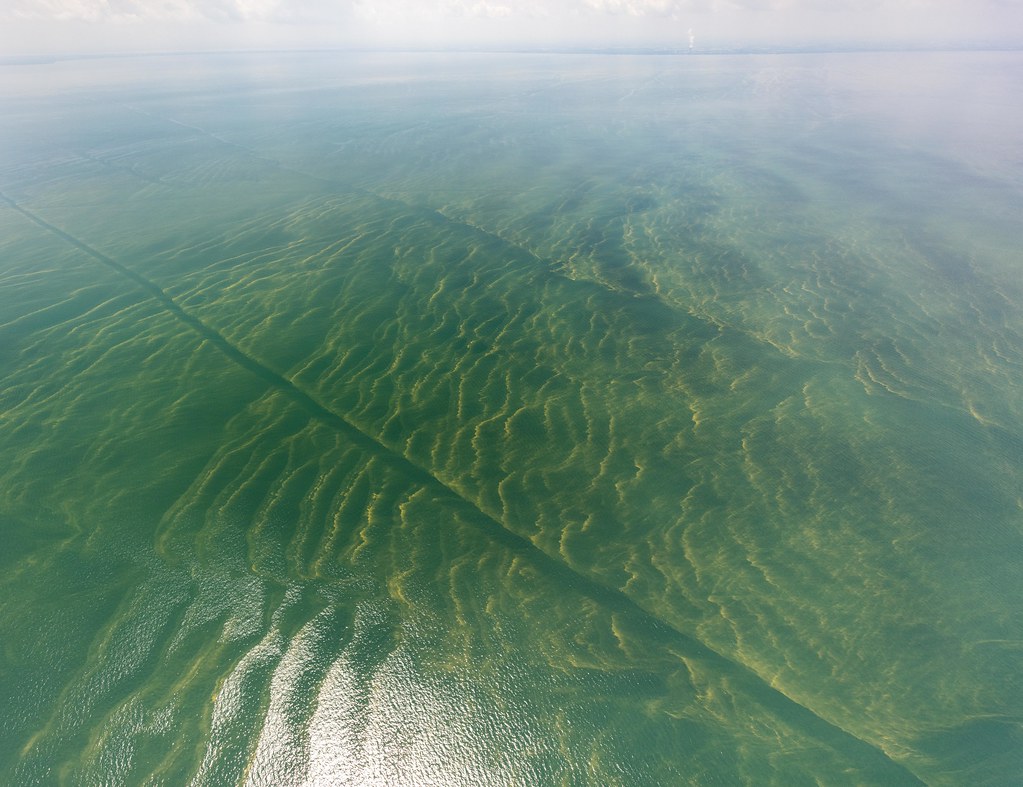The Great Bloom Theory| To Bloom or Not to Bloom
Project Details
Awards & Nominations
The Great Bloom Theory has received the following awards and nominations. Way to go!
 Best Use of Science
Best Use of Science

The Challenge | To Bloom or Not to Bloom
Harmful algal bloom prediction model
We aim to predict harmful algae blooms to apply prevention methods efficiently and discover patterns leading to algal blooms.

OUR GOAL: BEST USE OF SCIENCE
Try it out
Current model accuracy: ~92.3% (binary bloom month long prediction)
Working model/project: https://github.com/Danieluss/NASASpaceAppsBloom
Slides/Theory: https://docs.google.com/presentation/d/1hdg0hLL0XD...

Background
Every year here in Europe, we observe our beloved Baltic sea dying out. Every year, about 600,000 thousand tonnes of nitrogen and 30,000 thousand tonnes of phosphorus end up being dumped here. Baltic marine life as we know it may very soon come to an end due to harmful algal blooms which destabilize ecosystem. What's worse, the problem of harmful algal blooms is not unique to our sea.
And that's why we are here to act.

Harmful Algal Bloom in Western Basin of Lake Erie: July 2, 2018, (Photo Credit: Aerial Associates Photography, Inc. by Zachary Haslick)
NASA RESOURCES

Before we explain how we addressed the problem, we would like thank NASA for sharing the enormous amounts of satellite data that we all have freely available. As data scientists, we know how crucial data is for machine learning models. We built our model thanks to the rich NASA satellite datasets available online via web api. MODIS-Aqua dataset full of light spectrum analysis was our primary source (link below).
We all appreciate your work.
MODIS-AQUA CHLOROPHYLL CONCENTRATION SAT, 28 SEP 2019 (DAILY)
What it does

Our machine learning solution aims to predict harmful algal blooms in a way that would facilitate the discovery of the interplay between known factors. We hope that some day, thanks to such prediction, prevention methods could be applied locally in an efficient way.

The posed problem appeared to be challenging. Most of the time when machine learning is used, we treat the model as a black box - what is easy to comprehend is an input and an output, not the input-output mapping function itself. This is why we've decided to use the decision tree concept. We also discovered that the decision tree would not be able to utilize the rich NASA MODIS-Aqua satellite data which we wanted to use and that a convolutional neural network should do better as far as accuracy is concerned.
We propose a solution that came out as a result of a mind-storm and a night full of experiments. It was built upon both of the discussed models.
Future Plans
After we received a lot of feedback to keep developing the project we plan to get in touch with other scientists involved and keep fighting the results of eutrophication and global warming.

Built With
- python, tensorflow/keras, xgboost (we changed to lightgbm)
References
- NASA Goddard Space Flight Center, Ocean Ecology Laboratory, Ocean Biology Processing Group; (2014): Sea-viewing Wide Field-of-view Sensor (SeaWiFS) Ocean Color Data, NASA OB.DAAC. doi: 10.5067/ORBVIEW-2/SEAWIFS_OC.2014.0. Accessed on 2016/02/29.
https://oceancolor.gsfc.nasa.gov/l3/
- Jet Propulsion Laboratory, California Institute of Technology
https://podaac-opendap.jpl.nasa.gov/opendap/
- EutrophicationHELCOM thematic assessment of eutrophication2011-2016. Supplementary report to the‘State of the Baltic Sea’ report
- European Centre for Medium-Range Weather Forecasts
- Analysis of algae growth mechanism and water bloom prediction under the effect of multi-affecting factor
https://www.sciencedirect.com/science/article/pii/S1319562X17300359
- Cyanobacterial Harmful Algal Blooms: State of the Science and Research Needs H. Kenneth Hudnell
- Florida Department of Health. Harmful Algal Blooms – Economic Impacts. pdf. 2008
- Marieke Beaulieu, Frances Pick, Michelle Palmer, Sue Watson, Jenny Winter, Ron Zurawell, and Irene Gregory-Eaves. Comparing predictive cyanobacterial models from temperate regions. Can. J. Fish. Aquat. Sci. 71: 1830–1839 (2014)
- Marieke Beaulieu, Frances Pick, and Irene Gregory-Eaves. Nutrients and water temperature are significant predictors of cyanobacterial biomass in a 1147 lakes data set. Limnol. Oceanogr., 58(5), 2013, 1736–1746
- Dolman AM, Rucker J, Pick FR, Fastner J, Rohrlack T, et al. (2012) Cyanobacteria and Cyanotoxins: The Influence of Nitrogen versus Phosphorus. PLoS ONE 7(6): e38757
- T.S. Bianchi, P.S. Westman, C. Rolff, E. Engelhaupt, T. Andren, R. Elmgren Cyanobacterial blooms in the Baltic Sea: natural or human-induced? Limnol. Oceanogr., 45 (2000), pp. 716-726, 10.4319/lo.2000.45.3.0716
TAGS
#great, #bloom, #theory, #algal bloom, #machine learning, #algae, #artificial intelligence, #python, #tensorflow, #keras, #earth science, #satellite, #global warming, #eutrophication


